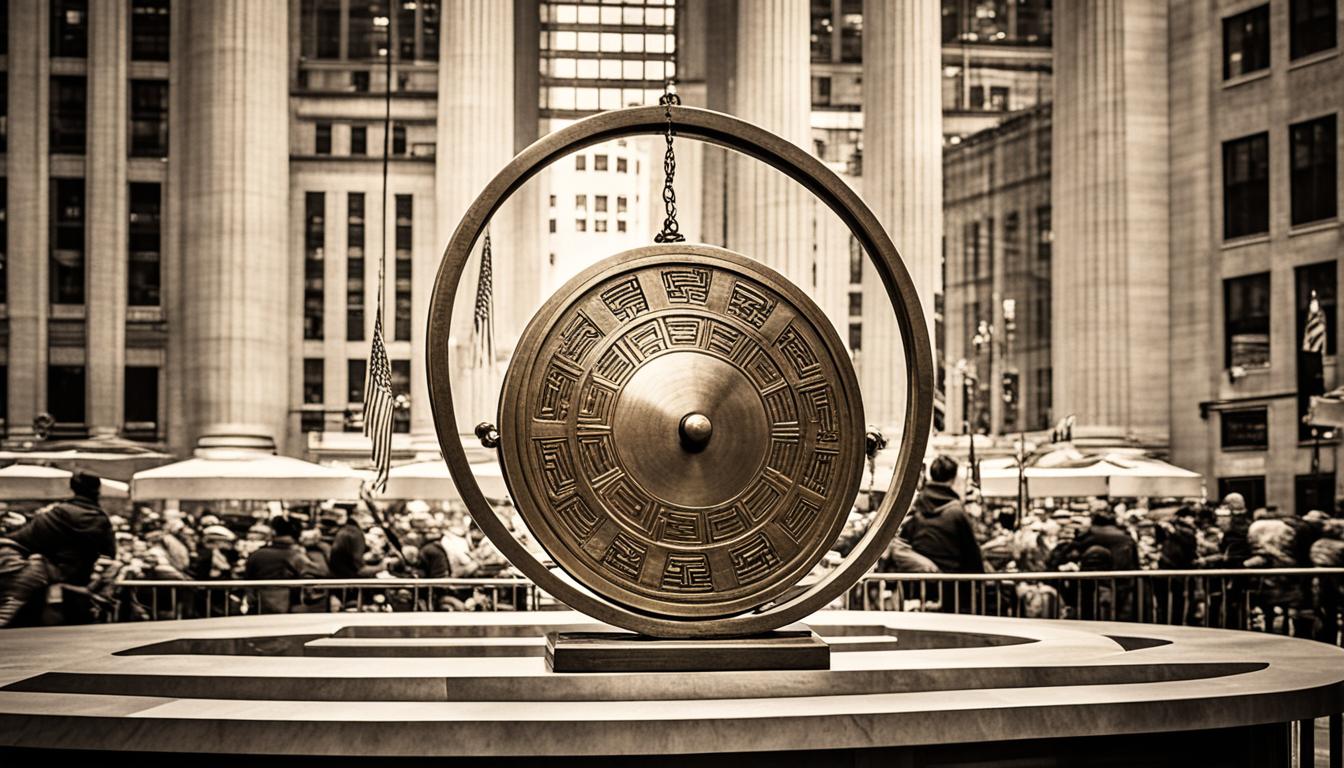The New York Stock Exchange (NYSE) is an iconic institution with a rich history and traditions that have evolved over time. One of the most interesting aspects of the NYSE’s early days is the use of a Chinese gong to signal the beginning and end of the trading day. This tradition began in the 1870s when the NYSE introduced continuous trading, requiring a daily signal to open and close the market.
The Chinese gong was struck with a padded hammer, creating a distinctive sound that echoed throughout the trading floor. This unique tradition continued until 1903, when the NYSE moved to its current location at 18 Broad Street. The choice of a Chinese gong as the NYSE’s trading signal adds a fascinating cultural element to the exchange’s history, highlighting the influence of global trade and cultural exchange on the development of American financial institutions.
Key Takeaways
- The NYSE used a Chinese gong to signal the opening and closing of the trading day from the 1870s until 1903.
- The introduction of continuous trading in the 1870s necessitated a daily signal to mark the beginning and end of the trading day.
- The Chinese gong was struck with a padded hammer, creating a distinctive sound that echoed throughout the trading floor.
- This tradition continued until the NYSE moved to its current location at 18 Broad Street in 1903.
- The use of a Chinese gong highlights the influence of global trade and cultural exchange on the development of American financial institutions.
The Early Days of the NYSE Trading Floor Bell
In the early days of the NYSE, a Chinese gong was used to signal the start and end of the trading sessions on the exchange floor. However, when the NYSE moved to its current building at 11 Wall Street in 1903, the gong was replaced by a large brass bell.

The new bell was electrically operated and specifically designed to resonate throughout the main trading floor, ensuring that all traders could hear it clearly. This change marked the beginning of a long-standing tradition at the NYSE.
The brass bell played a crucial role in maintaining order in the marketplace, as it signaled that no trades could take place before the opening or after the closing bell. To achieve the desired effect, the bell was tuned to the pitch of D and was rung nine times in a brisk tempo, with the final tone allowed to decay naturally.
NYSE’s Chinese Gong Replaced by Brass Bell in 1903
In 1903, the NYSE made a significant change to its trading floor by replacing the Chinese gong with a brass bell. This transition marked a new era in the Exchange’s history and established a tradition that has endured for over a century.
The decision to switch from the gong to the bell was driven by the need for a more distinctive and audible sound to signal the start and end of trading sessions. The G. S. Edwards Company of Norwalk, Connecticut, was commissioned to create the new brass bell, which measured an impressive 18 inches in diameter.
The introduction of the brass bell on the NYSE trading floor brought a sense of sophistication and tradition to the Exchange. The bell’s clear, resonant tone quickly became synonymous with the hustle and bustle of the trading day, and its presence added to the overall ambiance of the iconic institution.
As the NYSE continued to grow and evolve, the brass bell remained a constant presence, faithfully signaling the opening and closing of the market each day. The retirement of the Chinese gong and the adoption of the bell in 1903 marked a significant milestone in the Exchange’s history, one that would shape its identity for generations to come.
The Modern NYSE Bell Ringing Tradition
The NYSE bell ringing tradition has evolved significantly since the introduction of the brass bell in 1903. Today, the NYSE features four bells, one for each trading area, which are operated synchronously from a single control panel. These bells sound twice daily, at 9:30 a.m. to open trading and at 4:00 p.m. to close, marking the beginning and end of each trading session.
Over time, ringing the NYSE bell has become a celebrated tradition, with notable figures from various fields being invited to participate. Celebrities, politicians, and business professionals have all had the honor of ringing the bell, adding to the prestige and excitement surrounding the event. The first guest bell ringer was Leonard Ross, a 10-year-old who earned the privilege by answering stock market trivia on a TV game show in 1956.
Companies also use the NYSE bell ringing tradition to celebrate significant milestones. Executives from these organizations are often invited to ring the opening bell, symbolizing their achievements and success. For example, Horace Mann Educators Corp. of Springfield marked its 25th anniversary as a publicly traded company on the NYSE by having its executives ring the opening bell, showcasing the company’s growth and longevity in the market.
The NYSE bell ringing tradition has become an iconic symbol of the stock market and continues to capture the attention of people around the world. The participation of guest bell ringers, including celebrities and notable figures, adds to the allure and significance of this long-standing custom, cementing its place in the rich history of the NYSE.

Leave a Reply